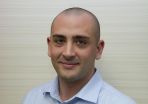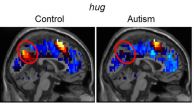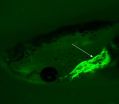(Press-News.org) PROVIDENCE, R.I. [Brown University] -- If decades of effort to bring more underrepresented minority students into science, technology, engineering and mathematics (STEM) fields were considered a grand chemistry experiment, then the modest results would suggest that while the formula may not be wrong, it may well be incomplete, according to a new article in the journal CBE-Life Sciences Education.
"I don't necessarily want to say that we've been doing it wrong all along, it's just that there are other ideas we can bring in," said lead author Andrew G.Campbell, a Brown University biology professor who develops and studies programs to recruit and retain underrepresented minority (URM) students to STEM.
Specifically what's been missing, Campbell said, has been the unfettered input of URM students. To begin to remedy that, he and his co-authors elicited the views of 50 URM students at a weekend retreat in Woods Hole, Mass., that they organized earlier this year.
"We didn't just sit down and design a survey and say, 'This is a good question to ask'," Campbell said. Surveys run the risk of bearing the biases of those who design them. Open-ended peer dialogue, the authors reasoned, would be more authentic.
Given that wide latitude, the students identified eight major themes that they said would improve their STEM training and career pursuits.
The students -- mostly undergraduates, but ranging up to postdocs -- hailed from Brown, Harvard University, Morgan State University, Northeastern University, Tufts University, the University of Massachusetts-Boston, Cornell University, the University of Buffalo, LaGuardia Community College, Pine Manor College, the College of Mount St. Vincent, the University of Michigan, Arizona State University, the Universidad Metropolitana, and Elizabeth City State University.
Eight ideas
The eight ideas reflect desires both for more pragmatic advice and deeper senses of connection and social meaning regarding the subject matter. Students suggested:
Including a social justice component in STEM education. For example considering biomedical research in the context of health disparities.
Training to help them better explain science to nonscientists, including family members who may be generally supportive but aren't always familiar with research.
Connecting STEM with other disciplines, including the humanities and the arts.
Learning sooner than well into graduate school about the career paths that become available with an advanced STEM degree.
Gaining guidance for achieving work-life balance. Older students may need this for child care, but even undergraduates may need it because they maybe helping to raise siblings or supporting other family members.
Reconsidering evaluation metrics that fail to account for the diversity or that reflect a misunderstanding of cultural differences.
Ensuring access to "invested mentors," who show a genuine interest in their careers.
Creating more opportunities for ancillary training, including parallel graduate degree programs, that allow for studies to evolve with changing or broadening interests.
Many of the themes students voiced are not unique to their URM status, Campbell acknowledged, but he said he was struck that students harbored some of the concerns -- including a need for work-life balance or career path advice -- so early in their academic careers.
Improving programs
Campbell and his co-authors plan to convene another retreat next year with 100 students to expand upon the themes in the paper, for instance to see if they hold up with a different and larger group. Campbell also hopes to learn from students at different stages in their academic or professional career why they've made the choices they have.
The data, stories and ideas he gathers can then be applied to shoring up that incomplete proverbial chemistry formula for successfully engaging URM students in STEM fields.
But Campbell said he doesn't have to look far to find examples of already working, implemented programs that could serve as models for helping students in many of the eight ways they said they need.
At Brown, for example, the open graduate curriculum allows students to pursue a masters degree in one field, (e.g., public health) after enrolling in doctoral studies (e.g., pathobiology). Meanwhile in the https://news.brown.edu/articles/2013/03/diversity, students take noncredit minicourses to help them gain more familiarity with research, Campbell said, but such minicourses could also be developed to address concerns such as science careers or social justice.
"You don't need an entire class or an entire semester to inform students," Campbell said. "You can design things like modules where students can learn about various options."
Meanwhile, at the Rhode Island School of Design, the paper notes, the STEM to STEAM program has produced many good ideas on how to better connect the sciences and the arts and design.
INFORMATION:
In addition to Campbell, the paper's other authors are Rachel Skvirsky of UMass-Boston; Henry Wortis of Tufts; Sheila Thomas and Ichiro Kawachi of Harvard; and Christine Hohmann of Morgan State.
The National Institutes of Health funded the research (grants including R13GM106577 and R25GM083270).
West Orange, NJ. December 1, 2014. Kessler Foundation researchers have authored a new article that provides insight into the variable impact of traumatic brain injury (TBI) on long-term memory. The article, "Working memory capacity links cognitive reserve with long-term memory in moderate to severe TBI: a translational approach," was epublished ahead of print on October 7 in the Journal of Neurology (10.1007/s00415-014-7523-4). The authors are Joshua Sandry, PhD, John DeLuca, PhD, and Nancy Chiaravalloti, PhD, of Kessler Foundation. This study was supported by grants ...
A new method for determining lung cancer risk could more efficiently identify individuals for annual screening and catch more cancers early, according to a study published in this week's PLOS Medicine. The study, conducted by Martin Tammemägi of Brock University, Canada, and colleagues, evaluates a lung cancer risk prediction model and identifies a risk threshold for selecting individuals for annual lung cancer screening.
Computed Tomography (CT) screening can identify lung tumors while they are still treatable, and the US National Lung Screening Trial (NLST) found ...
PITTSBURGH--Psychiatric disorders -- including autism -- are characterized and diagnosed based on a clinical assessment of verbal and physical behavior. However, brain imaging and cognitive neuroscience are poised to provide a powerful advanced new tool.
Carnegie Mellon University researchers have created brain-reading techniques to use neural representations of social thoughts to predict autism diagnoses with 97 percent accuracy. This establishes the first biologically based diagnostic tool that measures a person's thoughts to detect the disorder that affects many children ...
People could be putting their lives at risk by dismissing potential warning signs of cancer as less serious symptoms, according to a Cancer Research UK-funded study* published in PLOS ONE today (Tuesday).
More than half (53 per cent) of 1,700** people who completed a health questionnaire said they had experienced at least one red-flag cancer 'alarm' symptom during the previous three months***. But only two per cent of them thought that cancer was a possible cause.
Researchers sent the questionnaire listing 17 symptoms**** - including 10 widely-publicised potential cancer ...
LIMA--(2 December 2014) A new peer-reviewed study, released today at the start of the UN climate conference in Peru, reveals the unprecedented amount of carbon stored within the nine-nation network of Amazonian indigenous territories and protected natural areas. Accepted for publication in Carbon Management, the paper entitled, "Forest Carbon in Amazonia: The Unrecognized Contributions of Indigenous Territories and Protected Natural Areas," suggests that protecting the vast amount of carbon stored above ground in the forests of indigenous and protected lands - totaling ...
COLUMBIA, Mo. - According to a recent report from the Federal Reserve Board, 31 percent of Americans surveyed said they had no retirement savings, and almost half were not actively thinking about planning for retirement. Studies show that many Americans do not invest because they distrust the market and fear financial losses. Now, a University of Missouri researcher has found a way for financial planners to help decrease their clients' worries, which stem from the fear of losing money.
Michael Guillemette, an assistant professor in the MU College of Human Environmental ...
EAST LANSING, Mich. - To hunt or not hunt wolves can't be quantified as simply as men vs. women, hunters vs. anti-hunters, Democrats vs. Republicans or city vs. rural.
What's truly fueling the divisive debate is fear of wolves or the urge to care for canis lupis. The social dynamics at play and potential options for establishing common ground between sides can be found in the current issue of the journal PLOS ONE.
"People who are for or against this issue are often cast into traditional lots, such as gender, political party or where they live," said Meredith Gore, associate ...
Using a novel gene knock-in technique, effective insertion of an exogenous gene was demonstrated in human cells and in animal models, including silkworms and frogs. This strategy universally enables gene knock-in not only in cultured cells, but also in various organisms.
Genome editing using programmable nucleases enables homologous recombination (HR)-mediated gene knock-in. HR activity, however, is relatively low in most cultured cells and organisms. This problem presents technical hurdles for the application of HR-mediated knock-in technology in the field of life sciences. ...
RICHLAND, Wash. - A new study will help researchers create longer-lasting, higher-capacity lithium rechargeable batteries, which are commonly used in consumer electronics. In a study published in the journal ACS Nano, researchers showed how a coating that makes high capacity silicon electrodes more durable could lead to a replacement for lower-capacity graphite electrodes.
"Understanding how the coating works gives us an indication of the direction we need to move in to overcome the problems with silicon electrodes," said materials scientist Chongmin Wang of the Department ...
HANOVER, N.H. - Logging doesn't immediately jettison carbon stored in a forest's mineral soils into the atmosphere but triggers a gradual release that may contribute to climate change over decades, a Dartmouth College study finds.
The results are the first evidence of a regional trend of lower carbon pools in soils of harvested hardwood forests compared to mature or pristine hardwood forests. The findings appear in the journal Global Change Biology Bioenergy. A PDF of the study is available on request.
Despite scientists' growing appreciation for soil's role in the ...





